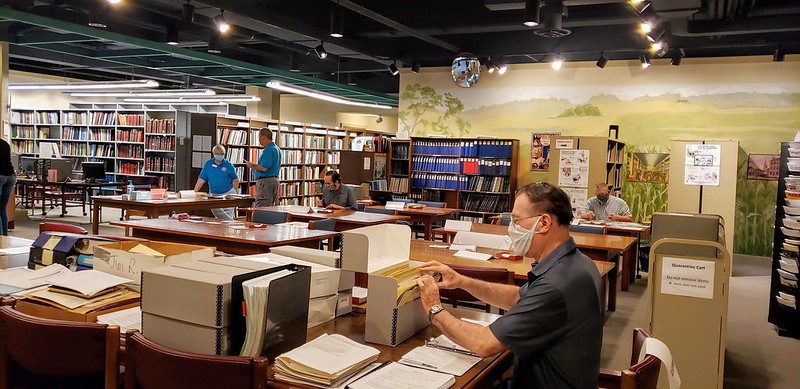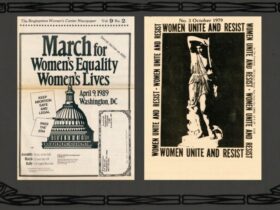When Liyang Dong, a doctoral candidate in the English Department, first heard about the deaths and prolonged detainment of immigrants stranded aboard the Golden Venture she was pulled into their stories. “I felt very compelled to find a way to get the voices out,” Dong said at a sit-down interview, “I felt I had a mission because this history was lost, hidden, erased.” Through digital storytelling and her research, Dong introduces a new way of preserving a neglected narrative. However, telling lost stories can often be extremely difficult; how do you find information about people and events that have been erased and maybe do not want to be found? For Dong, researching these stories meant going on a rollercoaster of emotions and inquiry.

Dong first learned about the Golden Venture when she joined two undergrads for an interview with Wang Ping in October 2019. While interviewing the poet Dong became particularly captivated by Wang Ping’s poem “Song of Calling Souls: The Drowned Voices from the Golden Venture” written from the perspective of those who drowned when the ship was stranded. The Golden Venture detainees and immigrants became a focus for Dong’s projects after that and she wrote about them through a variety of historical, legal and literary lenses. As Dong researched the detainee’s saga she found there were gaps in the record and it was difficult to find the answers and stories she was looking for.
The Golden Venture was a cargo ship sailing from Bangkok to New York City. 286 undocumented immigrants were smuggled in the ship’s hold hoping to rendezvous with other boats when they reached the Atlantic Ocean and continue their journey to land. However, when the ship got closer to the harbor the rendezvous vessels failed to appear and the Golden Venture was run aground by panicked smugglers on June 6, 1993. 10 died attempting to swim to safety. From the survivors, 238 men, 24 women, and 14 minors were taken into custody and detained in seven different locations across the United States. Of those who were detained, about 35 were granted asylum while 111 were deported. The rest continued to be imprisoned for almost four years fighting for asylum with the help of activist groups.
However, filling in the gaps has proved to be very daunting. Dong has traveled to York, PA to visit an attorney’s private archive, but has found that she keeps meeting dead ends. About 150 men were detained in a prison in York and it was a main site of activism groups who did weekly vigils, art sales, marches and letter campaigns to support and advocate for the rights of the asylum seekers. Dong visited and interviewed members of the activist group and saw some paper folding artworks they had saved. She was also able to visit the York County History Center and read some local newspapers that mentioned the detainees and vigils.
When she started gathering materials it became clear that although there were gaps, there was also a lot to sort through. Dong found herself deep in the archives trying to capture as much information as she could on her phone and in her notes from the newspapers and other materials she encountered in the archives in York. However, it was difficult to find any first person narratives from detainees who often had extremely limited access to anyone outside of the prisons they were kept in. That was especially true for the imprisoned women. While Dong was able to collect some stories, written testimonies, letters and artworks created by the detainees, she is still on the search for more that would allow her to keep the detainees’ own voices and experiences central to the project rather than focusing on what news articles and activists reported about the events.

Locating and including personal narratives is important to Dong but particularly difficult. Many of the lawyers who represented the women detainees have retired and are difficult to contact. Similarly, many of the people who were in contact with detainees are hard to find or have records which they have lost. Since the detainees were not granted much access to the outside world to tell their stories, many of their experiences are lost and many of them are scared to tell their stories. Many, including those remaining 55 granted humanitarian parole by Clinton in February 1997 remain undocumented today and are subject to deportation. Or, as Dong states, “A lot of them want to share their stores, but legally, socially, there are a lot of structures in place that prevent them from sharing.” By creating a digital project and dissertation Dong hopes to create a record of their stories that fills in the gaps of what is missing, but also, hopefully, create a safe space for those stories to be told.
Creating a digital project adds even more complications to Dong’s research. Dong worries about sharing too much of the detainees’ stories and turning their personal trauma into a spectacle. Especially since Dong has found it hard to source personal narratives, it’s been difficult to center detainee’s voices in the project when those voices have been silenced so much already. Opening up their stories to a wider audience would bring more awareness to these stories, but the attention is also difficult to control. Dong recognizes that difficulty sharing “I can only do that on my own front, I cannot prevent how other people will view it when it is online. I can only minimize the ethical concerns on my front as much as possible.”
Dong also hopes that by highlighting the long history of activism, awareness and representation that arose out of the detainees’ imprisonment, the project can help bolster support for activist groups. For example, the Pennsylvania Immigration Resource Center grew out of activism for the Golden Venture and continues to provide resources and legal aid free of charge to detainees and other immigrants. Dong hopes to highlight the critical legacy of activism that arose around the Golden Venture detainees and continues to today. From the activists who held nightly vigils to the lawyers continuing to give their time to cases today, Dong hopes to bring more awareness and support for these organizations and inspire more people to resist the punitive incarceration of and injustice on immigrants.
Currently Dong has more travels in her future as she plans to visit other detention sites where detainees were kept in Bakersfield, New Orleans and more pending travel funds. Currently, the story map that Dong has created is not live yet as she continues to gather materials and do more research.
Find more content on digital scholarship and feature stories about digital projects created by faculty, staff and students on Binghamton’s Campus and Libraries on the Library News blog by visiting libnews.binghamton.edu/news/tag/digital-byte/.
If you have a digital project that you would like featured in the blog please reach out to the Digital Scholarship Team in the library at dscenter@binghamton.edu. Projects at any stage of completion are welcome!






